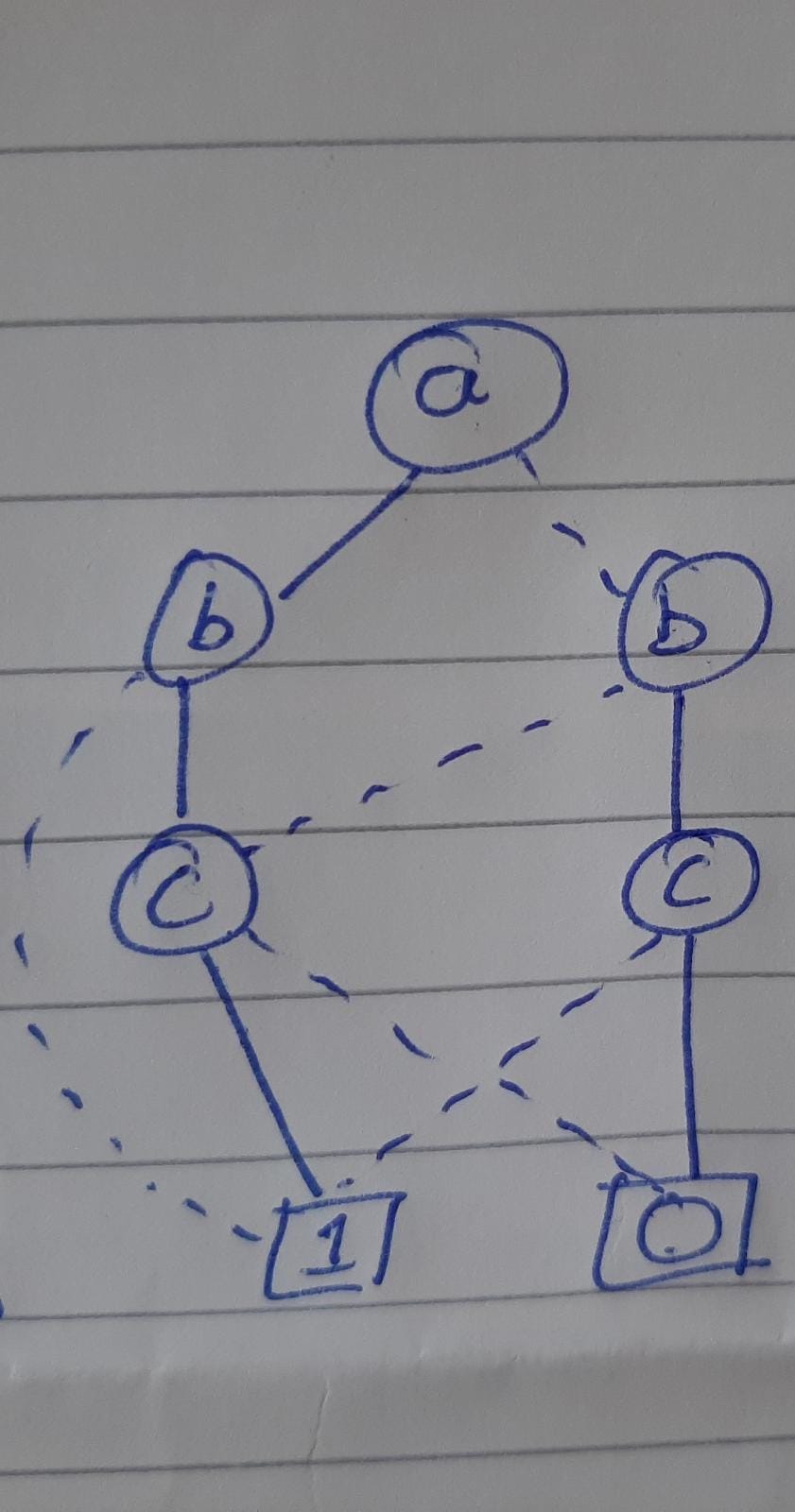I have difficulty understanding the construction of ZDD from SNF.
As I understand, given an FDD, to get a ZDD the steps are:
1. Set representation of FDD
2. RMNF form of the set representation
3. Construct SNF form
4. Draw the tree from SNF
Correct me if I am wrong.
So, when I do it for the question:

I get the set representation {{a,b,c}, {b}, {}}
which leads to RMNF of a&b&c ^ b ^ true
For the same, I get the SNF as in this picture.

But the ZDD constructed for the same, does not match with the solution:

What am I doing wrong?
PS: I also tried constructing a truth table and then from the DNF getting SNF which leads to the same SNF but the ZDD does not match.
Edit: I have also done the DNF and then constructed the tree.
Is there a different way to get the ZDD from set representation? Because I got the truth table right which in turn gives the set representation {{}, {c}, {a}, {a,c}, {a,b,c}} but when I convert it into full DNF like below and then get SNF for it and draw it, it is different from the solution.
I gave it a lot of time, not able to figure out what went wrong!
Getting SNF for DNF using set representation

Drawing the SNF (Which is supposed to be ZDD?):
